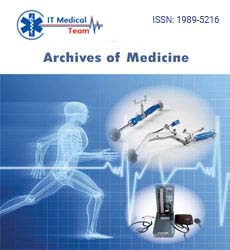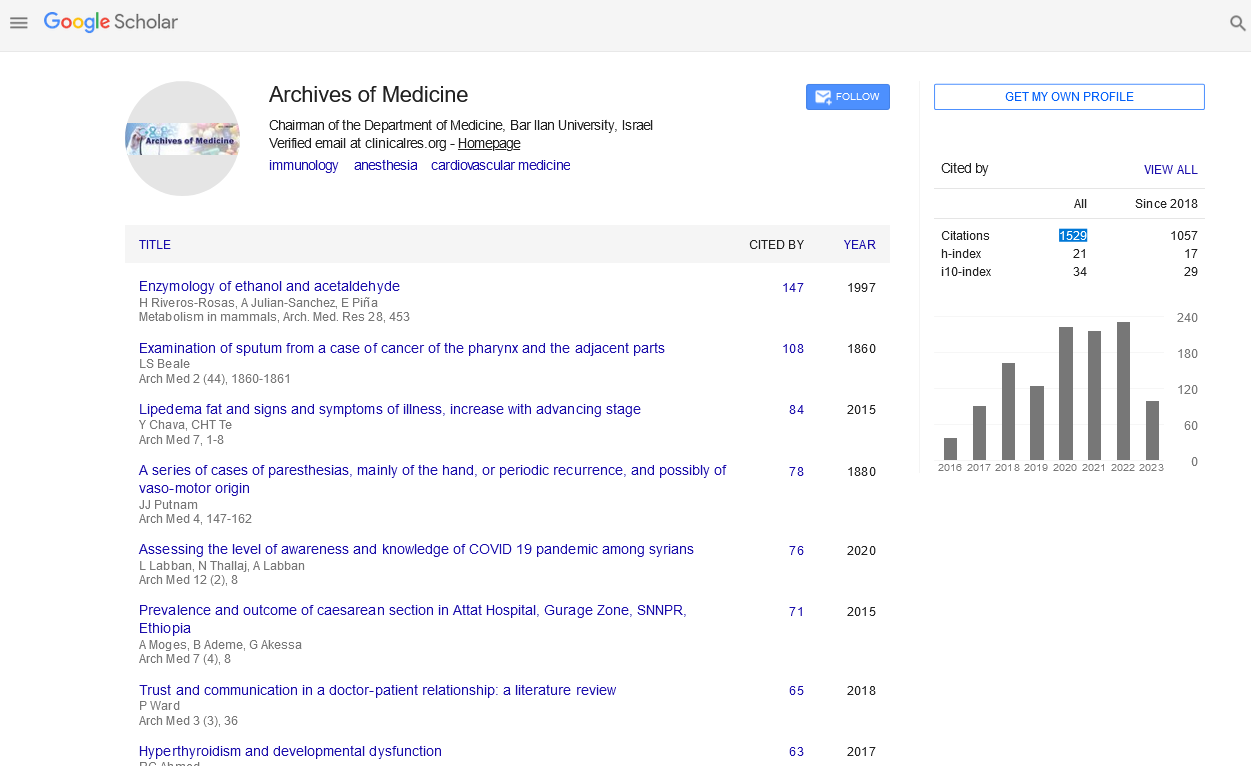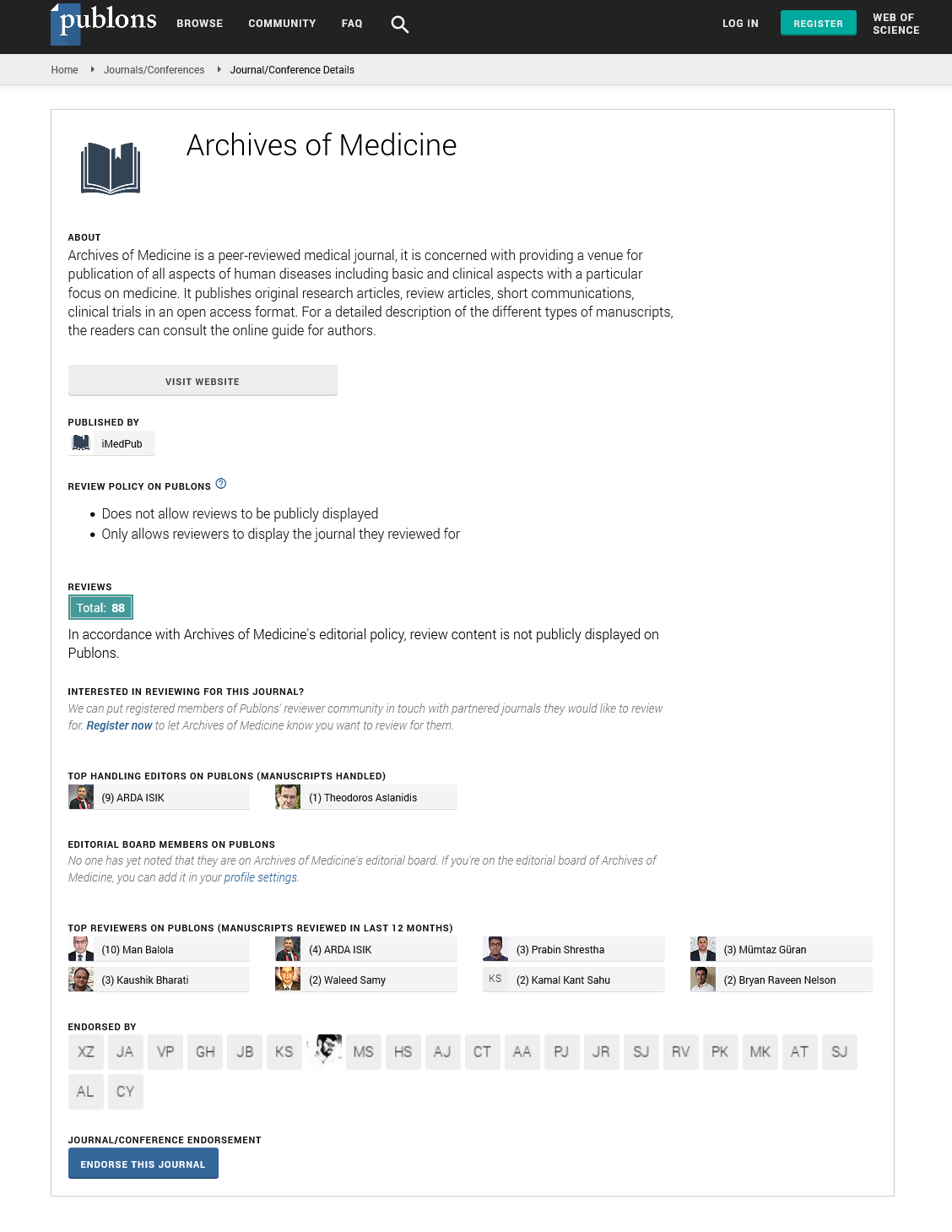Short Communication - (2025) Volume 17, Issue 1
Liquid biopsies in oncology: The future of non-invasive diagnostics
Santiago García*
Department of Oncology, University of Barcelona, Carrer de Pau Claris, Barcelona, Spain
*Correspondence:
Santiago GarcÃa, Department of Oncology, University of Barcelona, Carrer de Pau Claris, Barcelona,
Spain,
Email:
Received: 03-Jan-2025, Manuscript No. ipaom-24-15474;
Editor assigned: 06-Jan-2025, Pre QC No. P-15474;
Reviewed: 17-Jan-2025, QC No. Q-15474;
Revised: 22-Jan-2025, Manuscript No. R-15474;
Published:
29-Jan-2025
Introduction
The landscape of cancer diagnostics has undergone significant transformations over the past few decades. Traditional methods of detecting and monitoring cancer, such as tissue biopsies, imaging techniques, and blood tests, have been essential in diagnosing and managing the disease. However, these methods often have limitations. Tissue biopsies are invasive, costly, and can be uncomfortable for patients. Imaging techniques, while useful, may not always provide the sensitivity needed to detect cancer at its earliest stages. Additionally, the need for frequent monitoring, particularly for patients undergoing treatment, makes current diagnostic techniques less efficient and sometimes impractical. In recent years, liquid biopsies have emerged as a promising alternative to traditional diagnostic methods. A liquid biopsy refers to a non-invasive diagnostic test that detects cancer-related biomarkers, such as Circulating Tumor DNA (ctDNA), Circulating Tumor Cells (CTCs), exosomes, and RNA, in bodily fluids like blood, urine, and saliva. Liquid biopsies offer the potential to revolutionize the early detection of cancer, monitor treatment efficacy, assess minimal residual disease, and provide insights into cancer recurrence, all with minimal discomfort to patients [1].
As cancer research and technology continue to evolve, liquid biopsies are poised to become an indispensable tool in oncology. This article aims to explore the current state of liquid biopsy technology, its applications in oncology, and the potential it holds for the future of non-invasive diagnostics. By examining the key advancements, challenges, and opportunities of liquid biopsies, we will better understand how this technology could shape the future of cancer care.
Description
Liquid biopsies represent a breakthrough in cancer diagnostics, offering a non-invasive, highly efficient method for detecting and monitoring cancer-related biomarkers in bodily fluids like blood, urine, and saliva. Unlike traditional biopsies, which require invasive procedures to obtain tissue samples, liquid biopsies only require a simple blood draw, significantly reducing patient discomfort and risk. By analyzing Circulating Tumor DNA (ctDNA), Circulating Tumor Cells (CTCs), exosomes, and RNA, liquid biopsies provide valuable insights into the genetic and molecular makeup of a tumor, enabling clinicians to diagnose cancer, monitor treatment responses, assess Minimal Residual Disease (MRD), and detect recurrence, all without the need for invasive procedures. This technology has the potential to revolutionize the way cancer is managed, offering a more dynamic and real-time approach to patient care. The key advantage of liquid biopsies lies in their ability to provide a comprehensive view of the tumor's genetic profile by detecting ctDNA, which is shed into the bloodstream as cancer cells die or proliferate. These fragments of tumor DNA carry mutations, genetic alterations, and copy number variations that are often present in the cancer genome, offering a snapshot of the tumor's characteristics. Liquid biopsies can detect these genetic changes even in early stages of cancer when tumors may not yet be visible on imaging scans, allowing for earlier diagnosis and intervention. Furthermore, liquid biopsies are beneficial for monitoring treatment efficacy, as changes in ctDNA levels can indicate whether a cancer is responding to therapy, whether the tumor is shrinking or growing, and when resistance to treatment develops. This real-time monitoring enables oncologists to adjust treatment plans more rapidly than traditional methods, improving patient outcomes [2,3].
In addition to ctDNA, liquid biopsies can also detect CTCs, viable tumor cells that circulate in the blood and have the potential to seed new metastatic sites. By isolating and analyzing these cells, liquid biopsies can provide valuable insights into the presence of metastatic disease and help assess the risk of future tumor spread. Exosomes, which are small vesicles secreted by tumor cells, also play a role in liquid biopsy testing. These vesicles carry a variety of molecular information, including RNA and proteins, that can be analyzed to understand tumor behavior and predict cancer progression. Liquid biopsy technologies are continually evolving, with advanced methods being developed to increase the sensitivity and specificity of detecting these biomarkers in the bloodstream, offering even more accurate results for patients. Despite the immense promise liquid biopsies hold, challenges remain in their widespread clinical implementation. Issues like sensitivity and specificity, particularly in early-stage cancers or low tumor burdens, continue to be a hurdle. In some cases, the concentration of ctDNA in a patient's blood may be too low to detect, making early diagnosis difficult. Additionally, differentiating between cancer-related biomarkers and those produced by non-cancerous conditions remains a challenge that requires further refinement of testing methods. The standardization of these technologies across laboratories and clinical settings is also needed to ensure consistent and reliable results. Nevertheless, as research continues to progress, liquid biopsies are becoming an increasingly integral part of oncology, with the potential to transform cancer diagnosis and treatment, offering a less invasive, more accessible option for patients worldwide [4,5].
Conclusion
Liquid biopsies represent a significant advancement in the field of oncology, offering a non-invasive, dynamic, and highly promising method for diagnosing, monitoring, and managing cancer. By providing real-time insights into a patientâ??s tumor genetic profile, liquid biopsies allow for earlier detection of cancer, better monitoring of treatment responses, and the detection of minimal residual disease and cancer recurrence. These applications hold great potential for improving patient outcomes and personalizing cancer treatment. Despite the challenges that still need to be overcome, such as improving sensitivity, standardizing testing methods, and reducing costs, liquid biopsies are rapidly evolving and are likely to play a pivotal role in the future of cancer diagnostics and care. As research and technology continue to advance, liquid biopsies have the potential to transform the way cancer is diagnosed, treated, and managed, making them a key tool in the fight against cancer.
Acknowledgment
None.
Conflict of Interest
None.
References
- Connal S, Cameron JM, Sala A, et al. Liquid biopsies: the future of cancer early detection. J Transl Med. 2023 11;21(1):118.
Google Scholar Cross Ref Indexed at
- Bao Y, Zhang D, Guo H, et al. Beyond blood: Advancing the frontiers of liquid biopsy in oncology and personalized medicine. Cancer Sci. 2024;115(4):1060-1072.
Google Scholar Cross Ref Indexed at
- Noor J, Chaudhry A, Noor R, et al. Advancements and applications of liquid biopsies in oncology: A narrative review. Cureus. 2023;15(7).
Google Scholar Cross Ref Indexed at
- Lone SN, Nisar S, Masoodi T, et al. Liquid biopsy: A step closer to transform diagnosis, prognosis and future of cancer treatments. Mol Cancer. 2022 18;21(1):79.
Google Scholar Cross Ref Indexed at
- Armakolas A, Kotsari M, Koskinas J. Liquid biopsies, novel approaches and future directions. Cancers. 2023 3;15(5):1579.
Google Scholar Cross Ref Indexed at






